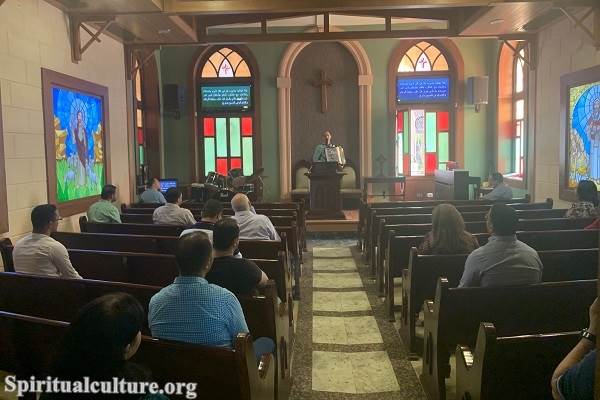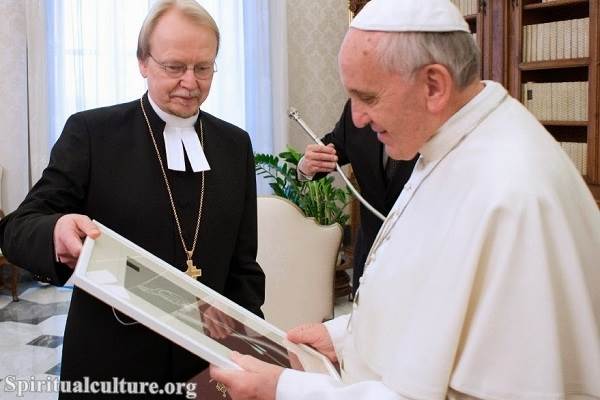The Lord’s Supper — also known as Communion or the Eucharist — is one of the most profound and symbolically rich practices in the Christian faith. For Protestants, this holy meal is not merely a ritual of remembrance, nor is it just a symbolic tradition. It is a doorway into the mystery of Christ’s death and resurrection, a communal act of worship, and a means of grace that touches both heart and soul.
In this article, Spiritual Culture invites you to explore how various Protestant traditions understand and celebrate the Lord’s Supper. Why do some see it as a memorial, while others sense a real spiritual presence? What unites Protestants in this sacred act, and where do they differ? Most importantly, what does this mean for the life of faith?
Let us journey through history, scripture, theology, and personal devotion to better understand how Protestants approach this holy table — and what it means to eat and drink in remembrance of Christ.
The Protestant Reformation and the Breaking of Bread
A Meal Reclaimed: Reforming the Eucharist
The Protestant understanding of the Lord’s Supper finds its roots in the 16th-century Reformation. Reformers like Martin Luther, Ulrich Zwingli, and John Calvin rejected certain teachings of the Roman Catholic Church — particularly the doctrine of transubstantiation, which taught that the bread and wine become the literal body and blood of Christ.
Instead, the Reformers sought a return to Scripture and the early Church’s practices. They emphasized Christ’s words at the Last Supper: “Do this in remembrance of me” (Luke 22:19). But what did that remembrance mean?
Three Main Protestant Views
While all Protestants affirm the Lord’s Supper as instituted by Christ, they differ on how Christ is present in the meal:
- Memorialist View (Zwinglian): Christ is not physically or spiritually present in the elements. The bread and wine are symbols, and the Supper is a memorial of Jesus’ sacrifice.
- Spiritual Presence View (Calvinist/Reformed): Christ is not physically present, but He is spiritually present. Through the Holy Spirit, believers commune with the risen Christ during the meal.
- Sacramental Union (Lutheran): Christ’s body and blood are truly present “in, with, and under” the bread and wine. It’s not a change in substance, but a real, mysterious presence.
Each view reflects a different understanding of how grace is experienced — and how mystery and faith interact in Protestant life.
Communion as a Sign of Grace, Not a Sacrifice
Contrasting the Catholic Mass
In Roman Catholic theology, the Eucharist is seen as a re-presentation of Christ’s one-time sacrifice. For Protestants, however, the Lord’s Supper is not a repeated sacrifice, but a celebration of a finished one. As Hebrews declares:
“For by one sacrifice he has made perfect forever those who are being made holy.” (Hebrews 10:14, NIV)
The table is not an altar. It is a feast of thanksgiving (eucharistia in Greek), grounded in the grace already won at the cross.
A Meal for the People
In many Protestant churches, the Supper is intentionally simple — bread and cup, shared among the people, sometimes passed from hand to hand. This reflects the priesthood of all believers and a desire to focus on Christ’s sufficiency, not the elaborate rites of institutional religion.
The Lord’s Supper in Worship: Practices and Frequencies
Weekly or Occasionally?
Different Protestant traditions celebrate Communion with varying frequency:
- Reformed and Presbyterian: Often monthly
- Lutheran and Anglican: Weekly or bi-weekly
- Baptist and Non-Denominational: Typically once a month or on special occasions
- Methodist: Varies widely — sometimes weekly, often monthly
Though the practice varies, the intent remains: to renew covenantal faith and proclaim Christ’s death until He comes (1 Corinthians 11:26).
Open vs Closed Table
Another difference lies in who is invited:
- Open Communion: Most Protestant churches welcome all baptized believers.
- Close Communion: Some traditions invite only members of their denomination or church.
- Closed Communion: Rare among Protestants, but practiced by some conservative groups.
The invitation reflects a church’s theology of community, unity, and discernment.
The Meaning of the Meal: Remembering, Proclaiming, and Partaking
“Do This in Remembrance of Me”
The heart of the Protestant view lies in remembrance — but not as a mere recollection. The Greek word anamnesis implies an active re-presentation of past events that shapes present reality.
To remember is to re-live — to enter once more into the story of the cross and resurrection. It is a remembering that nourishes faith and stirs the soul.
“Until He Comes”
The Lord’s Supper also points forward — to the wedding feast of the Lamb (Revelation 19:9). It is a meal of anticipation, reminding believers that Christ will return, and that every Communion is a rehearsal for eternal communion.
“One Bread, One Body”
Paul writes:
“Because there is one loaf, we, who are many, are one body, for we all share the one loaf.” (1 Corinthians 10:17)
The Supper binds believers to Christ — and to each other. In a fractured world, it is a sign of unity, humility, and shared hope.
Sacred Symbols: Bread and Wine (or Juice)
Earthly Elements, Heavenly Meaning
In most Protestant churches, the bread and the cup are understood symbolically — but that symbolism is rich and powerful.
- Bread: Christ’s body, broken for us — nourishment for the soul
- Cup: Christ’s blood, shed for the forgiveness of sins — the new covenant in His blood
Some churches use wine, others grape juice — depending on conscience, history, or pastoral concerns. What matters is the heart with which it is received.
Simple Yet Profound
There is beauty in simplicity. The ordinary becomes holy — a piece of bread, a sip of the cup — when taken in faith, in community, in reverent joy.
What Protestants Agree On: The Supper Is for the Church
Despite theological differences, Protestants broadly agree on several essential truths:
- The Lord’s Supper was instituted by Jesus
- It is a sacred command, not a human invention
- It remembers and proclaims the gospel
- It is a gift of grace, not a work of merit
- It nurtures faith and community
In this meal, the past, present, and future of salvation meet — the cross, the Church, and the coming Kingdom.
Reflect and Reimagine: What This Means for You
The Lord’s Supper is more than a rite — it is a rhythm of the soul. Whether you come to the table weekly or yearly, in stained glass sanctuaries or simple halls, it is an invitation to encounter Christ.
To partake of the bread and cup is to remember love that died for you, to proclaim a grace that still flows, and to join with others in a hope that will not disappoint.
So ask yourself:
- What does the Lord’s Supper stir in your heart?
- Is it time to come back to the table — not just physically, but spiritually?
Spiritual Culture encourages you to approach this sacred meal with fresh eyes and a humble heart. The table is set. The bread is broken. The invitation is open.
Come and remember. Come and receive. Come and rejoice.



